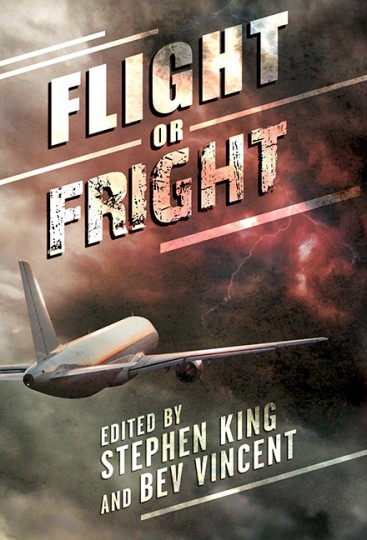 I received my contributor copy of Screem magazine yesterday. Haven’t had a chance to look at it in detail yet, but I plan to this weekend. The editor has invited me to write for them again, so now I have to come up with good pitches for him.
I received my contributor copy of Screem magazine yesterday. Haven’t had a chance to look at it in detail yet, but I plan to this weekend. The editor has invited me to write for them again, so now I have to come up with good pitches for him.
John C. Farris, son of author John Farris, had some nice things to say about me on his blog. My favorite line: “He also has the unique ability to make you feel like he’s known you forever.”
World Horror seems to have done a number on a couple of people. Peter Straub ended up going to the hospital with congestive heart failure a couple of days after the convention and Guest of Honor Steve Niles came down with walking pneumonia. Yikes!
I’ve never had to read the slush pile, but I’m in a similar situation at present in that I’m judging a short fiction contest. We had something on the order of 150 submissions. The four judges have divided the list evenly and will present our top 10 lists to each other. That way, every story gets at least one read, and the better among the bunch will get several reads. We each winnow the top 40 down to individual top 10 lists again and then it goes on to committee for discussion with the judges. It seems like a daunting task, but it’s not so bad. First off, our top 10 list doesn’t have to be ordered. That helps me greatly, because I’m very bad at ranking. I get bogged down in the decision about whether something should be #5 or #6.
The other thing that helps is that a lot of the stories quite frankly aren’t very good. The standouts, well, they stand out. You know how when you read an anthology and you like some stories better than others? Some don’t work for you—but they might work for other readers? When you read slush, you encounter stories that probably won’t work for anyone. When I discussed this at World Horror with someone who has done this before, I was told that I’ll probably find one story that is head and shoulders above all of the others.
Most of the submissions have competent sentence structure and good spelling and acceptable formatting. I haven’t seen one yet where I would say that the person didn’t understand the fundamentals of grammar, though there are a few slips here and there. But some of the authors don’t understand how to tell a story. One, for example, opened with a strong, hookish first sentence and then retreated to two or three pages of aimless preamble about weather and breakfast. The real story begins on about page 8 (out of 12). Another “story” is a 10-page explanation of who the main character is. It reads like a clinical analysis. Interesting, perhaps, but there’s no story. Some try too hard to be funny. Scary or suspenseful is hard…funny is really hard. Out of the first dozen or so I’ve read so far, only one made it to my personal short list, and even it wasn’t a standout. It’s an interesting experience. Think I’ll write about it for my next Storytellers Unplugged entry.
I’m still playing TV catch-up from World Horror. I’m now up to speed on C.S.I. as it heads into the home stretch. I thought Bruce Davison was going to get more mileage in last week’s episode, but he came to an early end. It took me a while to realize that the actor who plays Hank on Breaking Bad was Langston’s ex-wife’s new husband, and that the singer that Nate Haskell was watching was, in fact, Gloria. I’m not quite sure what all that sleight-of-hand concerning plastic surgery was supposed to be about. Maybe we’ll find out more in the finale, or maybe it was just a red herring. And I figured that the actor who plays Arlo Givens on Justified was going to get more use than just being a hick farmer, but I had no idea that he was going to end up being Haskell’s father. That was a nice twist. And I have to say that I was 100% willing to believe that Ray killed Tina. Good to see Sophia Curtis back in her new elevated position, and it was funny that they ran into Conrad Eckley’s daughter in Los Angeles, where she works for SID (Scientific Investigations Division), the California analog to CSI, apparently. Funny line of the episode came from the LAPD detective who marveled at the number of CSIs who came out to California. “Anybody left in Vegas to catch crooks?”
I’d almost forgotten about Hightower on The Mentalist, but Patrick is still working to get her name cleared. He hired a guy he met on a previous case to break into La Roche’s house to find his suspect list for the insider. I’m still betting on Van Pelt’s fiancé, though I’m not sure if the evidence backs that up. It was funny seeing Patrick try to hypnotize the burgler’s guard and fail. Lisbon came up with an innovative way to get him off the hook: punch the suspect in the nose in the presence of his lawyer, thereby violating due process and canceling the charges. For her sins, a one-week suspension and six months of anger management. She must really like Patrick.
This week we got to meet Rigsby’s ne’er-do-well father, a former meth cooker who now bootlegs cigarettes. He’s getting so old that he never fights any more, and he carries a knife to guarantee that any fisticuffs come to a quick end. I liked Patrick’s scene in the classroom, where he extracted information from the students. Especially his exit line, quoting from Copacabana. He thought the prison control room, with all it’s monitors, was reality TV at its finest. Big Bad Brother, I guess. The solution to the crime hinged on two observations: a gold bauble on the laundry driver’s wrist and carefully manicured fingers on an inmate. Did that play fair? Sort of, I guess, but it seemed a little bit micro-detailed. I liked Rigsby’s solution to getting the meth cooker out of his kitchen (“Always worked with my dad”) and the way his tussle with his father gave him the strength to tell Van Pelt why he won’t attend her wedding. That scene just reinforced my belief that her wedding won’t come off, perhaps because her fiancé is going to be exposed. Will there be any more Red John this season? Is there time?

